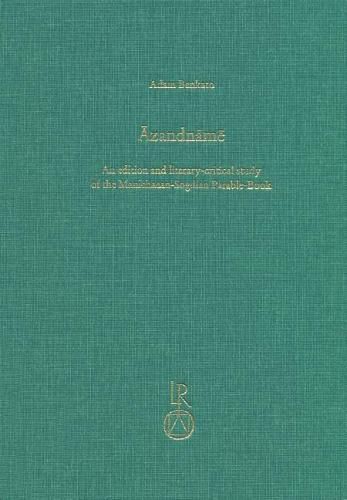Readings Newsletter
Become a Readings Member to make your shopping experience even easier.
Sign in or sign up for free!
You’re not far away from qualifying for FREE standard shipping within Australia
You’ve qualified for FREE standard shipping within Australia
The cart is loading…






The Manichaean communities in Turfan (in modern-day Xinjiang, China) produced numerous texts in many languages, including Sogdian, an eastern Middle Iranian language. The present work is an edition and literary-critical study of the longest continuous Manichaean text in Sogdian, known as the Azandname, or Parable-Book. The Parable-Book preserves parts of three parables which illuminate various aspects of Manichaean teaching by means of a narrative followed by an explanation. A new and expanded edition of the Sogdian text, with English translation and philological commentary, forms the first part of this study. Along with sermons, hymns, and confessionals, parables were one of the major genres of non-canonical texts produced by Manichaeans in Central Asian communities, surviving in Middle Persian, Parthian, and Old Turkic, as well as Sogdian. In the second part of this study, a new approach to the study of Manichaean parables is presented, taking into account their intertextuality as part of a genre that can only exist in interdependence on all other genres of Manichaean literature. This approach allows new light to be shed on the text of the Azandname while also investigating how and for which purposes the parables were produced and used. This work is intended for specialists of Manichaeism and/or Sogdian philology, as well as those with interests in Iranian philology or religions in Central Asia more generally.
$9.00 standard shipping within Australia
FREE standard shipping within Australia for orders over $100.00
Express & International shipping calculated at checkout
The Manichaean communities in Turfan (in modern-day Xinjiang, China) produced numerous texts in many languages, including Sogdian, an eastern Middle Iranian language. The present work is an edition and literary-critical study of the longest continuous Manichaean text in Sogdian, known as the Azandname, or Parable-Book. The Parable-Book preserves parts of three parables which illuminate various aspects of Manichaean teaching by means of a narrative followed by an explanation. A new and expanded edition of the Sogdian text, with English translation and philological commentary, forms the first part of this study. Along with sermons, hymns, and confessionals, parables were one of the major genres of non-canonical texts produced by Manichaeans in Central Asian communities, surviving in Middle Persian, Parthian, and Old Turkic, as well as Sogdian. In the second part of this study, a new approach to the study of Manichaean parables is presented, taking into account their intertextuality as part of a genre that can only exist in interdependence on all other genres of Manichaean literature. This approach allows new light to be shed on the text of the Azandname while also investigating how and for which purposes the parables were produced and used. This work is intended for specialists of Manichaeism and/or Sogdian philology, as well as those with interests in Iranian philology or religions in Central Asia more generally.